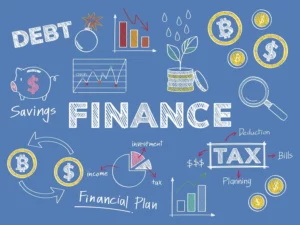VET is among the many tokens that are currently popular owing to its unique features and convenience. VET is a currency that operates on the VeChain platform. You haven’t heard of this cryptocurrency yet; it could be because there are currently too many altcoins, with more on the way.
It cannot be easy to track them all, and VET is not an ordinary coin. However, it is distinctive, which is why people adore it. What exactly is Vet Coin, and how can you mine and invest in it? The solutions are provided below.
What Is a VET Coin?
The VeChainThos platform’s token is a VET coin. This coin’s primary function is to transfer value across the network. The token was initially operated on the Ethereum blockchain until VeChain successfully transitioned to the VeChain blockchain. In 2018, the VEN blockchain was rebranded as the VeChainThor blockchain, or VET as we know it today.
VeChain was established in 2015. Sunny Lu, the former chief information officer of Louis Vuitton China, is the company’s founder.
Initially, the blockchain was a Bitse subsidiary, with Bitse being one of China’s largest blockchain companies. Furthermore, Bitse is one of the few blockchains with a sizable customer base among established businesses.
VeChain’s Blockchain Platform
VeChain is a blockchain platform specializing in logistics and supply chains. The VeChain token is managed by the VeChainThor blockchain, the open blockchain that powers VeChain.However, another cryptocurrency is on the blockchain, the VeThor token or VTHO.
The primary goals of the VeChain platform are to become leaders in initial coin offerings (ICOs) and decentralized applications (dApps) built on VeChain, as well as to disrupt the supply chain industry by providing transparent and actionable data.
It also wishes to serve as an intermediary in the Internet of Things (IoT). The mission of VeChain, according to its whitepaper, is to “enable the blockchain community, business owners, enterprises, governments, or any other individual to move their business activities to blockchain effortlessly.”
VeChain has formed several strategic alliances with various companies over the years to achieve its objectives; hence Vechain price prediction is expected to rise because of proper risk management and stability brought about by alliances. One of the agreements called for VeChain’s blockchain-powered solutions to be used by PricewaterhouseCoopers’ client base to improve product traceability and verification.
Apart from that, the platform collaborated with Renault, and they eventually created a digital car maintenance book with Viseo and Microsoft.
VeChain Tokens
VeChain’s blockchain platform was designed for “mass business adoption.” It has two tokens, namely VET and VTHO.
The official VeChain token is the VET coin, which is used to carry value from smart contracts. As a result, all decentralized application transactions on the VeChain blockchain will use the VET token. It is simple to use for investing by the general public.
The VTHO token, on the other hand, stands for VeChainThor Energy. It is used to power VeChain transactions and is equal to the cost of conducting transactions on its blockchain. Some people refer to it as VeThor Energy.
To conduct transactions on decentralized applications, developers must have funds for a specific number of underlying tokens. This is comparable to NEO’s “gas” and Ethereum’s ether. Both token systems, according to VeChain, were designed for effective governance.
Ethereum does not currently have a model like this. The reason for this is that the native gas token is highly volatile. As a result, developers must estimate the amount of ether required for a transaction. If the estimate is wrong, the transaction fails. VeChain, on the other hand, discovered various solutions to this problem, resulting in multiple technical enhancements.
What Makes VeChain (VET) Unique?
VeChain was founded to challenge traditional business models, and it is best known for its work in the supply chain, an industry that has changed little over the years. Its efforts to provide a decentralized trust layer for multi-party ecosystems have yielded significant results with high-profile clients and government agencies.
Transparent technology with no single point of failure or control enables greater security, efficiency, and ease of tracking for all data types while lowering costs through trustless automation via smart contracts. Carbon, supply chain, international logistics, incentivized ecosystems, automobile passports, and other industries benefit significantly from the digitization of trust and collaboration. As a result, VeChain’s platform appeals to a diverse range of clients and industries.
How Is the VeChain (VET) Network Secured?
VeChain (VET) is a Proof of Authority (PoA) token that requires relatively little computing power to achieve network security compared to a protocol like Bitcoin. According to a recent CTI report, VeChain’s annual carbon footprint is minimal, at only 2.4% of the emissions of mining a single Bitcoin, making PoA an extremely efficient consensus mechanism for securing the network.
Proof-of-authority is a process in which authority masternode operators are chosen by an independent Steering Committee, granting them the ‘authority’ to run a masternode. This model appeals to enterprises seeking assurances about the integrity and quality of the network’s validators and assurances that bad actors can be ejected if necessary.
Bottomline
VeChain is a one-of-a-kind blockchain, and while the token cannot be mined, it can be purchased on several exchanges, including Binance and Crypto.com. If you are interested in this token, you must first obtain a secure crypto wallet to store the currency. This way, you’ll always have it safe and ready to go.







